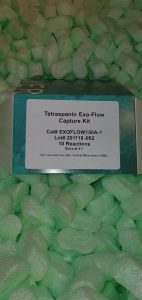
Nervous techniques are designed to turn out to be additional delicate to afferent nociceptive stimuli beneath sure circumstances equivalent to irritation and nerve damage. How ache hypersensitivity comes about is essential subject in the discipline because it in the end outcomes in persistent ache. Central sensitization represents enhanced ache sensitivity due to elevated neural signaling inside the central nervous system (CNS).
Particularly, a lot proof signifies that underlying mechanism of central sensitization is related to the change of spinal neurons. Extracellular signal-regulated kinases have acquired consideration as key molecules in central sensitization. Previously, we revealed the isoform-specific operate of extracellular signal-regulated kinase 2 (Erk2) in spinal neurons for central sensitization utilizing mice with Cre-loxP-mediated deletion of Erk2 in the CNS.
Still, how extracellular signal-regulated kinase 5 (Erk5) in spinal neurons contributes to central sensitization has not been instantly examined, neither is the purposeful relevance of Erk5 and Erk2 identified. Here, we present that Erk5 and Erk2 in the CNS play redundant and/or distinct roles in central sensitization, relying on the plasticity context (cell varieties, ache varieties, time, and so on.).
We used male mice with Erk5 deletion particularly in the CNS and discovered that Erk5 performs essential roles in central sensitization in a formalin-induced inflammatory ache mannequin. Deletion of each Erk2 and Erk5 leads to higher attenuation of central sensitization in this mannequin, in contrast to deletion of both isoform alone.
Conversely, Erk2 however not Erk5 performs essential roles in central sensitization in neuropathic ache, a sort of persistent ache attributable to nerve injury. Our outcomes counsel the elaborate mechanisms of Erk signaling in central sensitization. Real-time polymerase chain response was used to decide the mRNA expression of EphB4.
Immunohistochemistry and western blotting have been carried out to analyze the expression of TIPE3 in lung most cancers medical tissues and cells. TIPE3-overexpressing and knock-down NSCLC cell traces have been established by switch of TIPE3 coding sequence and shRNA, respectively. In vitro purposeful assays have been carried out to assess the results of TIPE3 on proliferation and metastasis of NSCLC cells.
Tumor xenograft mouse mannequin was used to study the roles of TIPE3 in progress of NSCLC cells in vivo. Western blotting, immunofluorescence, and immunohistochemistry have been performed to consider the affiliation of TIPE3 and molecules associated to AKT/ERK1/2-GSK3β-β-catenin/Snail pathway.
PI3K, MEK, or GSK3β kinase and proteasome inhibition assays in addition to β-Trcp and STUB1 siRNA assays have been employed to decide the contribution of AKT/ERK1/2-GSK3β signaling and ubiquitin-proteasome pathway to the regulatory results of TIPE3 on expression of β-catenin, Snail1, and Slug.
The significance of mitogen-activated protein kinase (MAPK) pathway signaling in regulating microglia-mediated neuroinflammation in Alzheimer’s illness (AD) stays unclear. We examined the position of MAPK signaling in microglia utilizing a preclinical mannequin of AD pathology and quantitative proteomics research of postmortem human brains. In multiplex immunoassay analyses of MAPK phosphoproteins in acutely remoted microglia and mind tissue from 5xFAD mice
we discovered phosphorylated extracellular signal-regulated kinase (ERK) was the most strongly upregulated phosphoprotein inside the MAPK pathway in acutely remoted microglia, however not whole-brain tissue from 5xFAD mice. The significance of ERK signaling in major microglia cultures was subsequent investigated utilizing transcriptomic profiling and purposeful assays of amyloid-β and neuronal phagocytosis
which confirmed that ERK is a vital regulator of IFNγ-mediated pro-inflammatory activation of microglia, though it was additionally partly essential for constitutive microglial features. Phospho-ERK was an upstream regulator of disease-associated microglial gene expression (Trem2, Tyrobp), in addition to a number of human AD threat genes (Bin1, Cd33, Trem2, Cnn2), indicative of the significance of microglial ERK signaling in AD pathology.
Quantitative proteomic analyses of postmortem human mind confirmed that ERK1 and ERK2 have been the solely MAPK proteins with elevated protein expression and optimistic associations with neuropathological grade. In a human mind phosphoproteomic examine, we discovered proof for elevated flux by means of the ERK signaling pathway in AD. Overall, our analyses strongly counsel that ERK phosphorylation, significantly in microglia in mouse fashions, is a regulator of pro-inflammatory immune responses in AD pathogenesis.
